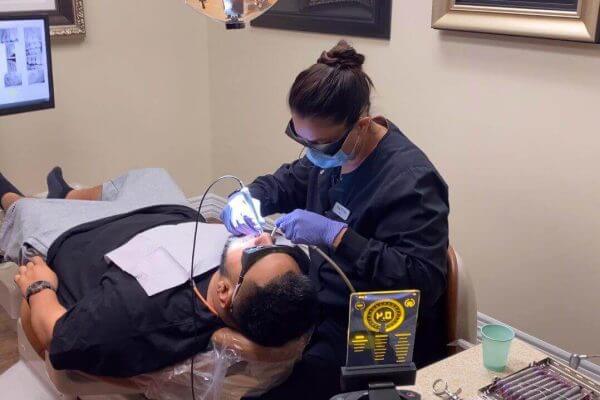Dr. Mark Phillipe, DDS, and Dr. Derek Hauser, DDS, have dedicated their careers to providing the Lake Elsinore and Inland Empire community in Riverside County with top-tier dental care, integrating the latest dental technology into our services. From the precision of our in-house CEREC cosmetic dentistry to the groundbreaking capabilities of the Solea Laser, our commitment to modern dental solutions ensures every patient receives the best care possible.
In addition to the most advanced dental practice in our area, we believe in empowering our patients with knowledge. As part of our ongoing commitment to community health, we wanted our patients to have the latest education about various oral conditions to see if any might apply to you.
This list provides insights into their causes, symptoms, and the state-of-the-art treatments we offer right here at Lakefront Family Dentistry for many of them.
As you delve into these topics, remember that understanding is the first step to prevention and proactive care. Let’s explore the ways in which oral health shapes our lives and how Dr. Hauser and Dr. Phillipe are here to support your oral health journey.

Gingivitis
– Disease Description: Early stage of gum disease caused by plaque accumulation. Symptoms include red, swollen gums that bleed easily.
– Cause: Poor oral hygiene that allows bacteria in plaque to remain on the teeth and harden. Regular consumption of sugary foods and drinks, smoking or chewing tobacco, and dental appliances that can irritate the gum tissue also contribute. Certain medications, hormonal changes (like pregnancy or menopause), and medical conditions can increase susceptibility.
– Treatment: Regular professional cleaning, improved home oral care routines, and potentially antimicrobial mouthwashes.
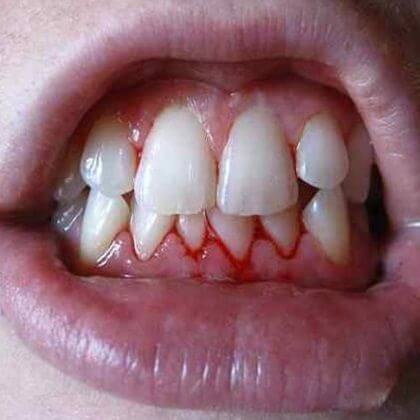
Periodontitis
– Disease Description: Advanced stage of gum disease where the bone and fibers that support the teeth get irreversibly damaged.
– Cause: Prolonged gingivitis that remains untreated, allowing bacteria to spread below the gumline. Poor oral hygiene, smoking, genetics, age, diet, health history, and certain medications can increase the risk. Underlying conditions like diabetes can also exacerbate its development.
– Treatment: Scaling and root planing, gum graft surgery, or laser treatments to reduce pocket depths and regenerate damaged bone.

Dental Caries (Cavities)
– Disease Description: Destruction of tooth enamel leading to holes in the teeth.
– Cause: Bacteria in the mouth converting sugars and starches from food into acids. These acids, combined with bacteria, food particles, and saliva, form a sticky film called plaque that erodes tooth enamel. Frequent consumption of sugary or acidic foods and drinks, poor oral hygiene, and lack of fluoride increase risk.
– Treatment: Fillings, crowns, or root canals, depending on the severity.
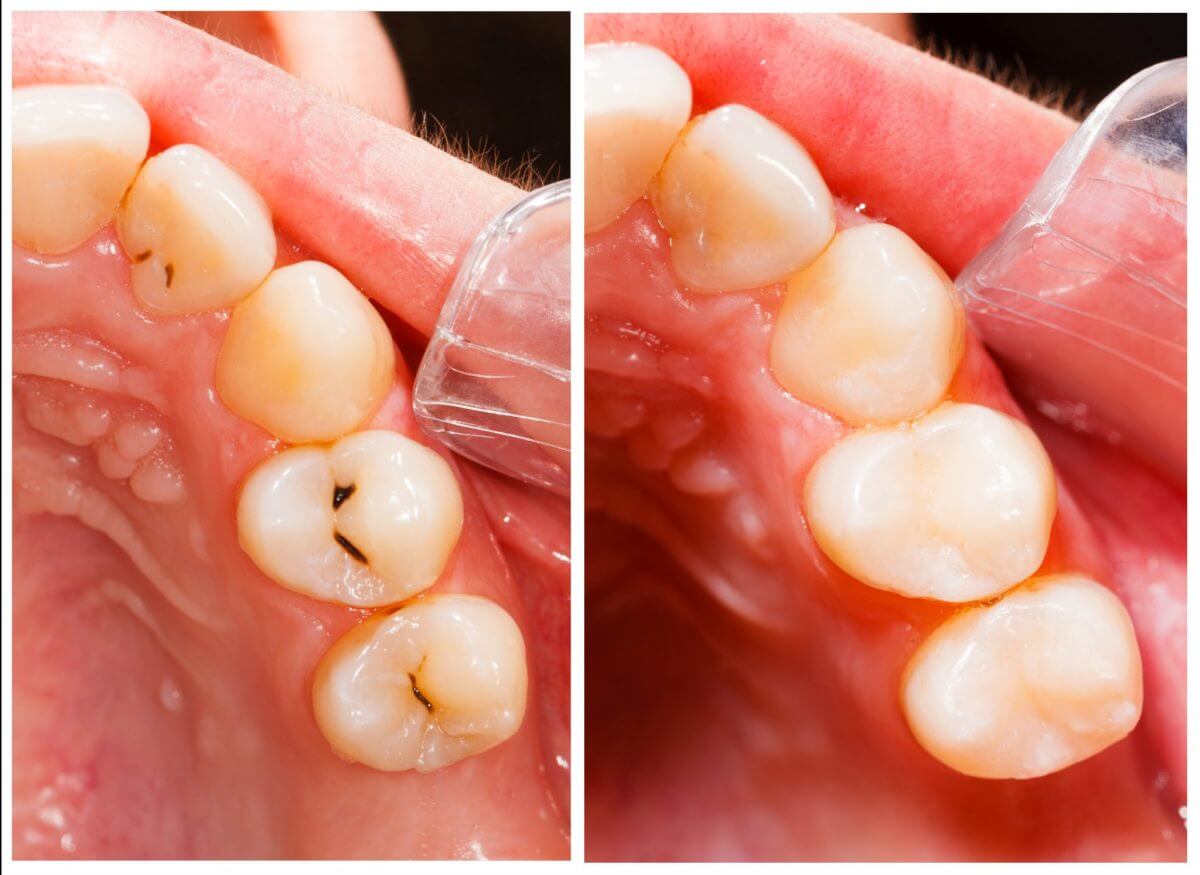
Oral Cancer
– Disease Description: Growth or sore in the mouth that does not go away.
– Cause: Prolonged use of tobacco products, excessive alcohol consumption, infection with human papillomavirus (HPV), prolonged exposure to sun (lip cancers), and a family history of cancer.
– Treatment: Early detection through regular dental screenings, followed by surgical removal, radiation, or chemotherapy.
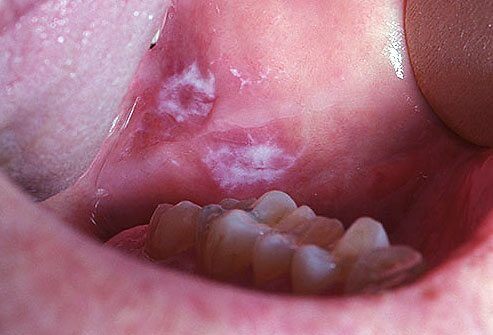
Edentulism (Total Tooth Loss)
– Disease Description: Complete loss of all natural teeth, which can significantly impact oral function and aesthetics.
– Cause: Chronic periodontal disease, untreated cavities, trauma, and certain systemic diseases or conditions can lead to tooth loss. Long-term neglect of oral health and age are also contributing factors.
– Treatment: At Lakefront Family Dentistry, we offer a range of prosthetic solutions including complete dentures, implant-supported dentures, and full-mouth dental implants to restore both function and appearance for edentulous patients. Our state-of-the-art technologies and skilled practitioners ensure that patients regain confidence in their smiles.
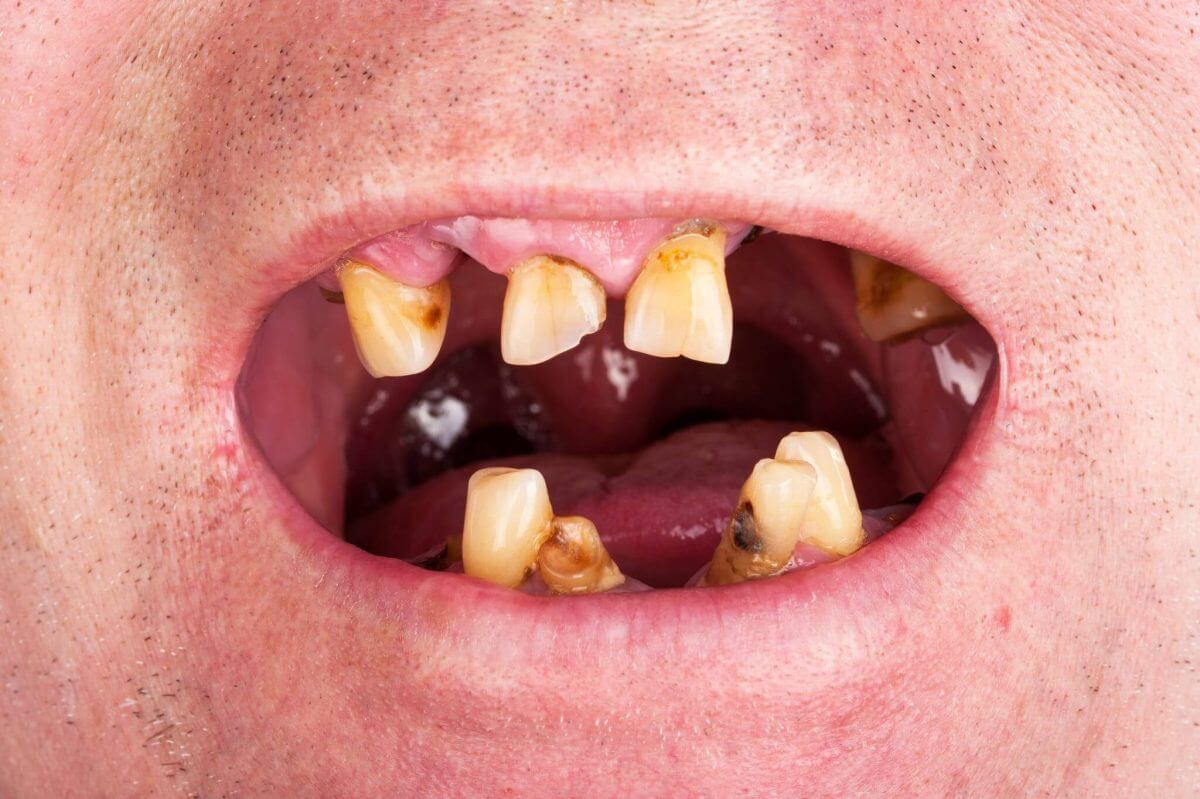
Temporomandibular Joint Disorders (Abbreviation: TMD)
– Disease Description: Problems related to the jaw joint causing pain, difficulty chewing, and joint noises.
– Cause: Arthritis in the TMJ, jaw injury, long-term (chronic) grinding or clenching of teeth, certain connective tissue diseases, or sometimes the cause may be unclear.
– Treatment: Pain relievers, muscle relaxants, oral splints, mouth guards, and in severe cases, surgical interventions.

Halitosis (Bad Breath)
– Disease Description: Persistent bad breath often caused by bacteria, gum disease, or other internal issues.
– Cause: Bacteria breaking down food particles, leading to the production of sulfur compounds; gum disease; smoking; dry mouth; sinus or respiratory infections; certain foods; and certain medical conditions like diabetes or liver disease.
– Treatment: Treatment of underlying gum disease, professional cleanings, tongue scrapers, and specialized antimicrobial mouthwashes.
Oral Candidiasis (Thrush)
– Disease Description: Fungal infection in the mouth leading to white lesions, redness, and discomfort.
– Cause: Overgrowth of the Candida fungus, often due to prolonged antibiotic use, weakened immune system, certain medications, smoking, or health conditions like diabetes.
– Treatment: Antifungal medications, improved oral hygiene, and potential changes to medications causing dry mouth.
Bruxism (Teeth Grinding)
– Disease Description: Grinding or clenching of teeth, often during sleep, leading to tooth wear and jaw pain.
– Cause: Stress and anxiety, certain sleep-related disorders such as sleep apnea, abnormal bite, or teeth that are missing or crooked.
– Treatment: Mouth guards, physical therapy, and addressing underlying causes like stress or sleep disorders.

Dental Abscess
– Disease Description: A pocket of pus caused by bacterial infection, leading to pain and swelling.
– Cause: When bacteria enter the dental pulp – the deepest part of the tooth that contains blood vessels and nerves – usually due to untreated dental cavities, injury, or prior dental work.
– Treatment: Draining the abscess, root canal treatment, tooth extraction, or antibiotics.
Enamel Erosion
– Disease Description: Loss of tooth enamel due to acid attack, leading to sensitivity and discoloration.
– Cause: Excessive consumption of acidic foods and beverages, acid reflux disease, certain medical disorders such as bulimia, or environmental factors like friction or wear.
– Treatment: Bonding, veneers, or crowns to protect the eroded tooth and fluoride treatments to strengthen enamel.
Dry Mouth (Xerostomia)
– Disease Description: Reduced saliva production, leading to mouth discomfort, difficulty swallowing, and increased cavity risk.
– Cause: Side effects from certain medications, radiation therapy, chemotherapy, aging, tobacco use, nerve damage, or conditions like Sjögren’s syndrome and diabetes.
– Treatment: Salivary stimulants, artificial saliva, medications, or addressing underlying causes like certain diseases or drug side effects.
Oral Herpes (Cold Sores)
– Disease Description: Painful sores on the lips, gums, or inside of the mouth caused by the herpes simplex virus.
– Cause: Infection with herpes simplex virus type 1 (HSV-1) often transmitted through close personal contact, including kissing.
– Treatment: Antiviral drugs, ointments, and pain-relieving creams or gels.

Geographic Tongue (Sometimes Called Map Tongue)
– Disease Description: Inflammatory condition leading to patchy and smooth areas on the tongue.
– Cause: Exact cause is unknown, but it’s believed to be related to genetics, stress, allergies, diabetes, and hormonal fluctuations.
– Treatment: Topical medications to relieve discomfort, though the condition often resolves on its own.
Mucocele
– Disease Description: A mucous cyst resulting from a ruptured salivary gland duct, usually on the lips or inside of the cheeks.
– Cause: Trauma to salivary ducts, such as lip biting, piercings, or accidental damage.
– Treatment: Surgical removal, laser therapy, or cryotherapy.
Leukoplakia
– Disease Description: White or gray patches on the tongue, inside of the cheeks, or gums, often linked to tobacco use or other irritants.
– Cause: Chronic irritation from tobacco (smoked or chewed), alcohol, rough teeth or dental work, or ill-fitting dentures.
– Treatment: Removal of the source of irritation, monitoring by a dentist, and in some cases, surgical removal of the patch.
Oropharyngeal Candidiasis
– Disease Description: Fungal infection in the mouth and throat, more common in those with weakened immune systems.
– Cause: Overgrowth of the Candida yeast, often due to prolonged antibiotic use, weakened immune system, diabetes, or wearing dentures.
– Treatment: Antifungal medications and improved oral hygiene.
Tooth Sensitivity
– Disease Description: Pain or discomfort in teeth when exposed to certain stimuli, like hot or cold temperatures.
– Cause: Worn tooth enamel or exposed tooth roots, cavities, cracked teeth, gum disease, or the aftermath of dental procedures.
– Treatment: Desensitizing toothpaste, fluoride gel treatments, dental bonding, gum grafts, or a root canal, depending on the cause.
Cracked Tooth Syndrome
– Disease Description: A tooth crack too small to show up on X-rays, which causes pain when biting down.
– Cause: Chewing hard objects, trauma, large fillings, exposure to extreme temperatures, or bruxism (teeth grinding).
– Treatment: Dental bonding, crowns, root canal, or extraction, depending on the crack’s location and extent.
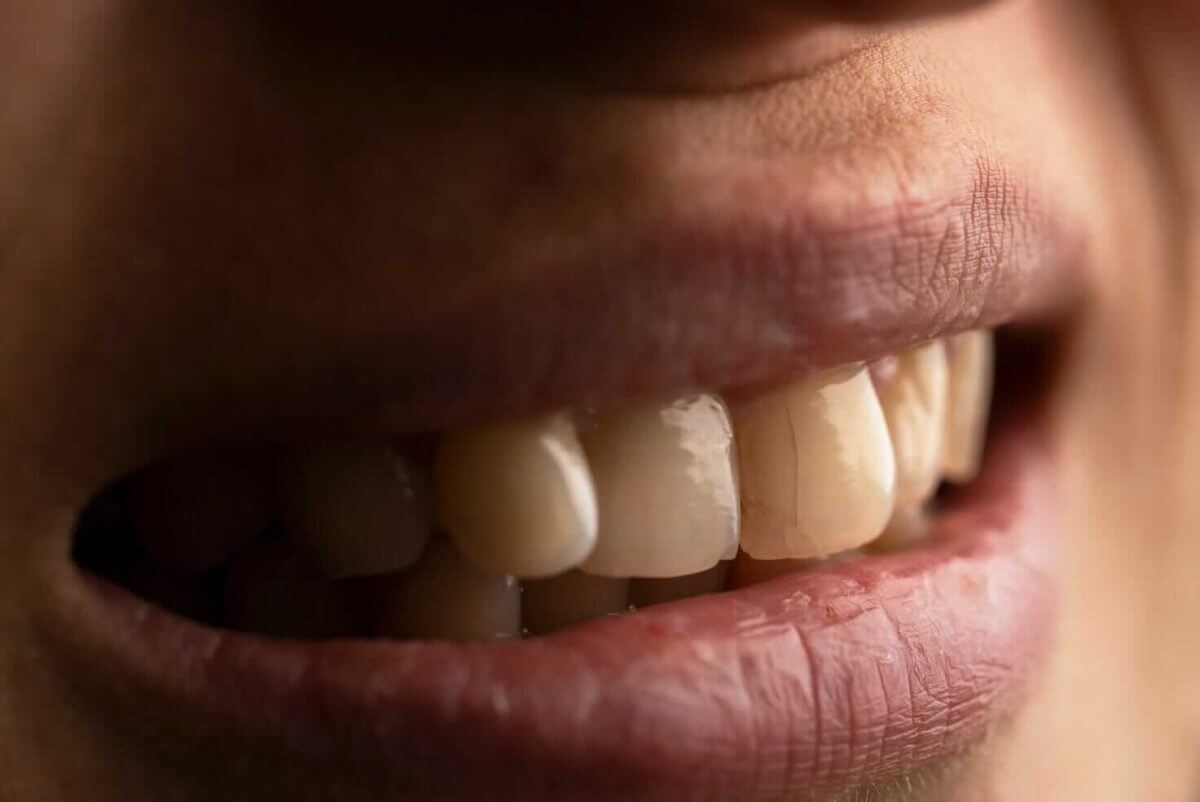
Dental Enamel Hypoplasia
– Disease Description: Underdevelopment or thinning of tooth enamel, leading to tooth discoloration and increased sensitivity.
– Cause: Genetics, premature birth, malnutrition, infections during childhood, or exposure to certain medications or chemicals during tooth development.
– Treatment: Dental bonding, veneers, or crowns to protect and improve the tooth’s appearance.
Ankyloglossia (Tongue-Tie)
– Disease Description: A condition where the tongue’s tip is attached to the mouth’s bottom, restricting its movement.
– Cause: Genetic trait, where the lingual frenulum (the cord connecting the tongue to the mouth’s floor) is overly short or tight.
– Treatment: Frenectomy, a simple surgical procedure to cut the tissue.
Burning Mouth Syndrome (BMS)
– Disease Description: A chronic condition characterized by a burning pain in the mouth, with no apparent dental or medical cause.
– Cause: The exact cause is often unclear, but potential factors include hormonal changes, dry mouth, certain medications, nerve damage, allergies, acid reflux, and nutritional deficiencies.
– Treatment: Medications to relieve dry mouth, pain medications, cognitive-behavioral therapy, and treatment of underlying causes.
Lichen Planus
– Disease Description: An inflammatory condition that can affect the mouth, leading to white patches, redness, and ulceration.
– Cause: Exact cause is unclear but is believed to be related to an immune system response triggered by certain medications, infections, or allergies.
– Treatment: Corticosteroids, antihistamines, and other medications to reduce inflammation.
Pemphigus Vulgaris
– Disease Description: A rare autoimmune disorder that causes painful blisters and sores in the mouth and on the skin.
– Cause: An autoimmune response where the body mistakenly attacks proteins in the skin and mucous membranes.
– Treatment: Corticosteroids, immunosuppressive drugs, and other treatments to manage and reduce symptoms.
Black Hairy Tongue
– Disease Description: A temporary, harmless condition where the tongue appears black and hairy.
– Cause: Overgrowth of the papillae on the tongue due to poor oral hygiene, smoking, alcohol, certain medications, or a lack of regular tongue cleaning.
– Treatment: Improved oral hygiene, brushing or scraping the tongue, and avoiding potential triggers.
Eruptive Lingual Papillitis
– Disease Description: Small, painful inflammatory bumps that appear on the surface of the tongue.
– Cause: The exact cause is not known, but it may be related to viral infections, stress, or trauma.
– Treatment: Generally self-resolving, but mouthwashes or topical treatments may be prescribed to alleviate symptoms.
Nicotine Stomatitis
– Disease Description: A condition characterized by a thickened, whitish appearance of the roof of the mouth, due to heat from smoking or consuming hot beverages.
– Cause: Chronic exposure to heat, typically from pipe smoking, but also seen with cigars, cigarettes, or very hot beverages.
– Treatment: Discontinuation of smoking or reducing the temperature of consumed beverages.
Fibroma
– Disease Description: A benign growth in the oral cavity, often resulting from chronic irritation or trauma.
– Cause: Chronic trauma or irritation, such as from biting the inner cheek or lip, rough teeth, or ill-fitting dentures.
– Treatment: Surgical removal if it becomes bothersome and addressing the underlying cause to prevent recurrence.
Angular Cheilitis
– Disease Description: Painful cracking on the corners of the mouth and inflammation.
– Cause: Fungal or bacterial infection, nutritional deficiencies (especially B vitamins and iron), dry skin, or drooling.
– Treatment: Antifungal or antibiotic creams, lip balms, and nutritional supplements if deficiencies are identified.
Torus Palatinus & Torus Mandibularis
– Disease Description: Bony protrusions located centrally in the hard palate are known as Torus Palatinus, while those found within the mandible close to the tongue are termed Torus Mandibularis.
– Cause: Genetics is believed to play a major role, although other factors may contribute.
– Treatment: No treatment is generally required unless they interfere with speech, eating, or wearing dentures. In such cases, surgical removal is considered.
Actinic Cheilitis
– Disease Description: A pre-cancerous condition characterized by persistent dryness and scaling of the lower lip.
– Cause: Prolonged sun exposure, leading to damage of the lip’s outer layer.
– Treatment: Topical treatments, cryotherapy, or surgical removal. Avoidance of sun and use of lip balms with sunblock are preventive measures.
If you are experiencing any of these oral conditions, Request an Appointment to meet with our expert dentists who have over 40 years of combined experience treating thousands of happy dental patients.
Call (951) 244-9495 during business hours or fill out the appointment request form through our website anytime and our staff will get back to you and confirm your request.




